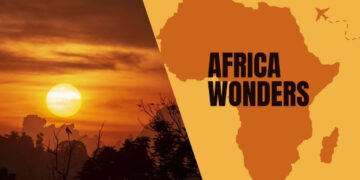The state of the environment is worsening at an alarming rate, driven by a complex web of social-ecological challenges. From the intensifying impacts of climate change to the pervasive issues of air and water pollution, the stark reality is hard to ignore. Our oceans are becoming more acidic, our lands are degrading, and countless species are facing the threat of extinction. The need for action and environmental education has never been more urgent, as we grapple with these interconnected crises that endanger the very fabric of life on Earth.
According to the UNEP, the widespread destruction of the natural world is severely undermining the pursuit of the Sustainable Development Goals (SDGs) and jeopardizing humanity’s future. A human-induced triple planetary crisis—comprising climate change, nature and biodiversity loss, and pollution and waste—is pushing the planet to its breaking point.
This crisis threatens the very foundations of human existence: the food we eat, the air we breathe, the water we drink, and the materials and resources upon which societies are built. The stakes have never been higher, and the urgent need for action has never been clearer. Hence, the need for environmental education.
Effective environmental education is far more than just passing on information. It is a transformative process that shapes environmental attitudes, instills values, and deepens knowledge. Moreover, it equips individuals and communities with the skills necessary to work together and take meaningful, positive action for the environment.
Nations are embracing sustainable practices, and organizations are making concerted efforts to reduce their carbon footprints. Eco-friendly services, sustainable manufacturing, packaging, and distribution practices are becoming the norm. Tight regulations are in place to ensure production activities do not harm the environment. Central to this is the United Nations Sustainable Development Goals (SDGs), a blueprint for peace and prosperity for people and the planet now and into the future.
There has been a continued effort to reduce carbon footprints and make Ghana and the world at large a safer and more sustainable place to live. Article 41 of the 1992 Constitution of Ghana outlines the duties of a citizen. Section 41(g) encourages Ghanaians to actively contribute to the welfare of their community, while section 41(k) emphasizes the responsibility to protect and preserve the environment. However, one crucial group has often been left out of the discussion: children.
Why Start with Children?
Environmental education goes beyond the classroom; it’s a way of life. It involves teaching children about the natural world, the impact of human activities, and the importance of sustainable practices.
It is imperative to create a culture of environmental care among children. By integrating issues around environmental care and climate change into the learning process, we can ensure that the next generation is proactive in adopting environmentally friendly activities and practices. If children understand these concepts from a very young age, they will grow up to build eco-friendly industries and integrate sustainable practices into their daily lives.
The Benefits of Environmental Education for Children
Children who have had environmental education develop a sense of stewardship. They understand that their actions have consequences and that they can make a difference. This responsibility often translates into other areas of their lives, making them more conscientious and proactive.
Environmental education encourages children to think critically. They learn to analyze complex systems, understand cause-and-effect relationships, and develop problem-solving skills. These abilities are invaluable, not just for environmental issues but for all aspects of life.
Ami Series: A Step Towards Inclusive Environmental Education

Audrey Azoulay, Director-General of UNESCO, emphasizes that education plays a pivotal role in reshaping our connection with the natural world. By investing in environmental education, we take a proactive step toward preserving our planet for future generations.
In Ghana, environmental education is often taught solely in English. This sometimes makes it difficult for many learners to fully grasp and integrate these crucial ideas into their daily lives.
To address this gap, the National Council for Curriculum and Assessment (NaCCA), entrusted with the development of national curriculum and assessment standards for pre-tertiary education in Ghana, has granted approval to the Ami Series. Authored by Ami D. Christelle Zami and published by Bolingo Consult into seven languages namely; French, English, Zulu, Kiswahili, Ewe, Arabic and Twi, the children’s book on the environment and climate change is now endorsed as supplementary material for basic 1-3 levels.
The Ami Series stands out as one of the best books for environmental education due to its innovative fusion of storytelling with essential lessons on environmental conservation and sustainability while promoting mother tongue literacy. Through vibrant illustrations and captivating narratives, children are not only entertained but also inspired to embrace their role as stewards of the environment.
Conclusion
Environmental education for children is not just an option; it’s a necessity. By teaching children about the environment, we are empowering them to make a positive impact. These young learners will grow up to be the change-makers our world desperately needs. So let’s start today. Let’s plant the seeds of environmental awareness and watch them grow into a greener, more sustainable future.










